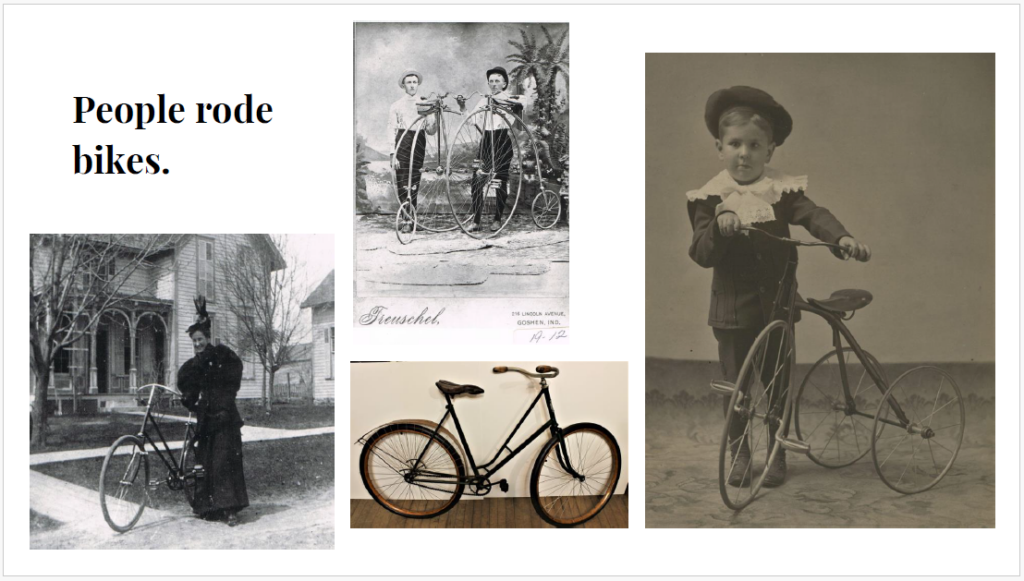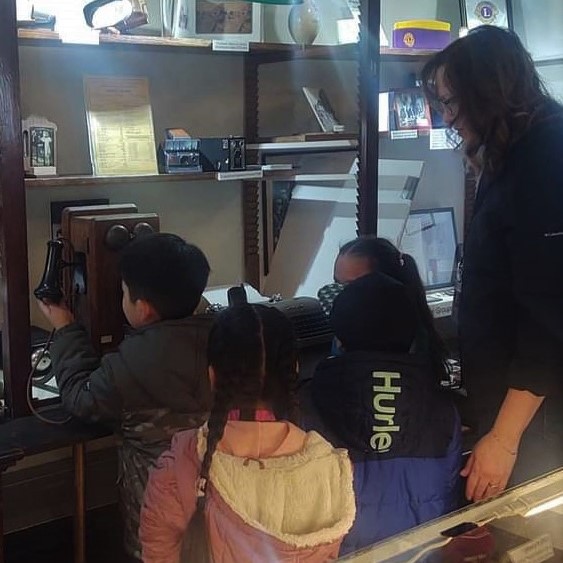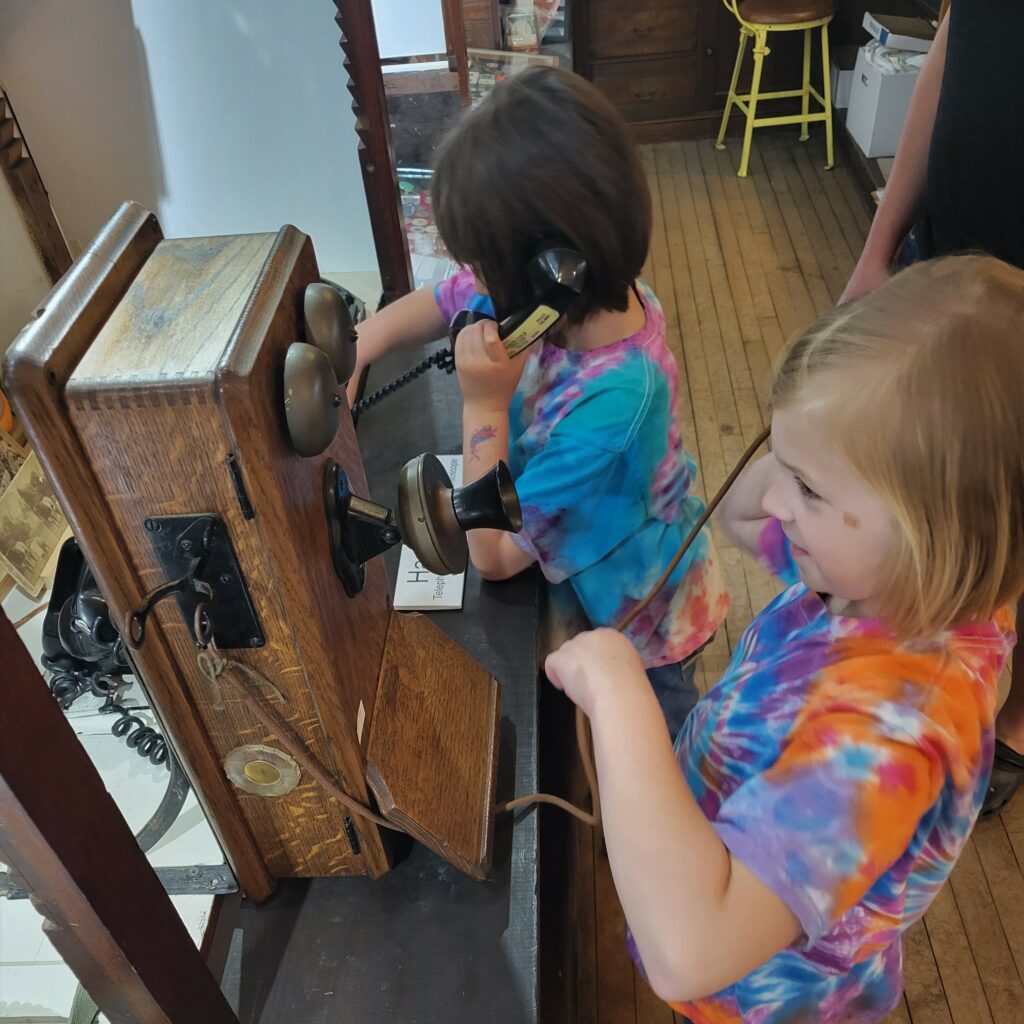By Danaé Wirth, Growth Coordinator for the Goshen Historical Society Museum, with the mission to preserve and share the on-going story of Goshen, Indiana, and one of AMM’s 2023 Solid Light Scholars.
Earlier this year our small-town-specific museum was asked what we had to offer for kindergarten-age students. A few volunteers and I engaged in conversations reviewing what we have and what we had done in the past for classroom programs. As a former teacher, I immediately began to think, how do we (as a museum) encourage historical understanding in young children through developmentally appropriate experiences? Teaching history to young children is tricky. Typically, children first need to develop an understanding of the concept of time and their relationship to it. Introducing young children to items from different time periods may pique their curiosity but helping them relate more fully to an item’s function and purpose can serve as a building block for understanding historical context. In our attempt to help young students make connections to objects and stories of the past, we incorporated some key findings about how people learn into our program:
- It is important to connect new learning with existing experiences and knowledge.
- Hands-on and experiential learning tends to be more effective.
- Young children have a limited attention span so maximizing the learning time is essential.
Taking this into consideration, we used a field trip model that incorporates a pre-experience with an on-sight hands-on experience that proved successful for our young patrons. Here is an overview of our field trip model:
Pre-Visit
We created a simple slideshow comparing items from our museum with their modern-day versions (e.g., telephones, record players, cameras). We sent the slideshow to teachers in advance of their on-site visit. This served as an initial exposure to the items in our museum, provided background information through conversation, and prompted excitement for their visit.
Onsite Visit
We carefully organized the on-site visit by strategically placing each of four specific stations in different areas of the museum. The four stations included items from the slideshow and additional related items that students could touch and use. We divided the stations into themes that included Communication, Photography, Music, and Household. Museum volunteers manned the stations and provided information about the objects. We allowed 10 minutes at each station and 2 minutes for transitions. Once all the student groups had visited all the stations, we gathered to unpack their experiences.
Results
Participating in the pre-visit activity gave students a sense of anticipation and they were eager to share what they had learned before their visit. Students were equally intrigued by the hands-on experience and maintained interest as evidenced by their conversations with each other and volunteers. The whole visit lasted just over an hour, which seemed just right for their attention span. There were no discipline issues and students never seemed bored. The teachers were delighted to have such an organized experience and to see how students related the pre-visit activity to the visit. We proved that incorporating what we know about how people learn can be a powerful tool for outreach. Throughout the summer, several students returned to the museum with their families to show what they had learned. This small investment of time to engage young learners resulted in engaging their families. This is priceless to us.



